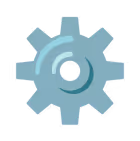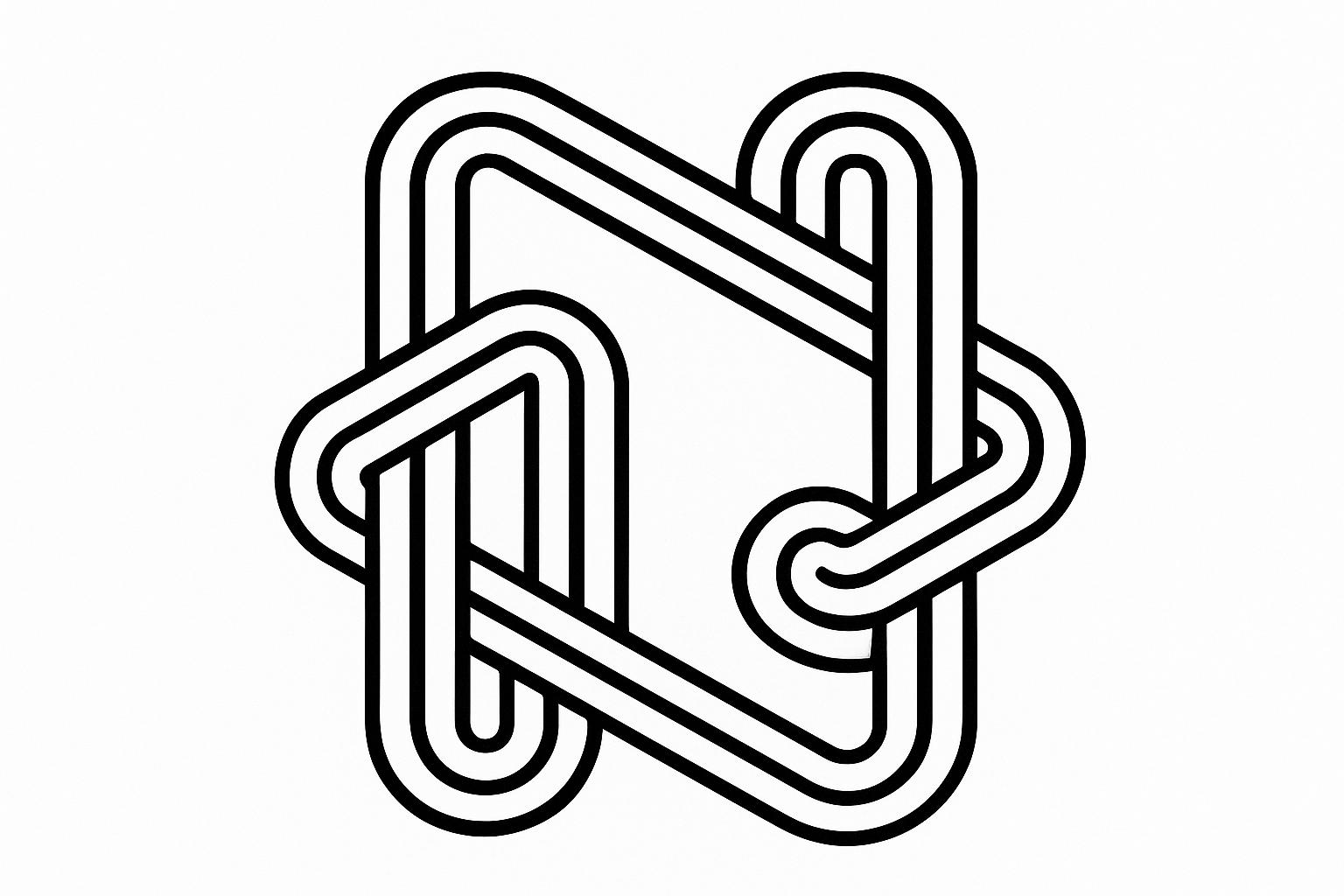
| Tool | Main Use | Key Features | Integrations | Starting Price |
|---|---|---|---|---|
| God of Prompt | AI prompt management | AI-curated prompts, role-specific recommendations, API support | ChatGPT, Claude, Midjourney, Slack | Free; $150 bundle |
| Tanka.ai | Content organization | Dynamic knowledge graph, semantic search, expert identification | Microsoft 365, Google Workspace, Slack | Custom pricing |
| Document360 | Knowledge base creation | AI Writing Agent, auto-tagging, SEO metadata generation | CRM, CX tools, chat platforms | Custom pricing |
| Confluence | Team collaboration | AI content generation, real-time editing, intelligent search | Atlassian tools, Office 365, Google Workspace | Free; $6.05/user |
| Guru | Workflow-integrated answers | AI-powered search, role-based delivery, announcements | Salesforce, Slack, Chrome extension | Free trial; $15/user |
| Bloomfire | Knowledge sharing | AI content tagging, discussion boards, automated recommendations | Salesforce, Microsoft 365, Google Workspace | Custom pricing |
| Glean | Enterprise-wide search | Semantic search, knowledge graphs, proactive knowledge delivery | 100+ apps including Slack, Google Workspace | Custom pricing |
Choose a tool based on your company’s size, team needs, and integration requirements. For smaller teams, God of Prompt or Guru might work best. Larger enterprises may benefit from Glean or Bloomfire for their advanced search and collaboration capabilities. Experiment with a pilot program to find the best fit.

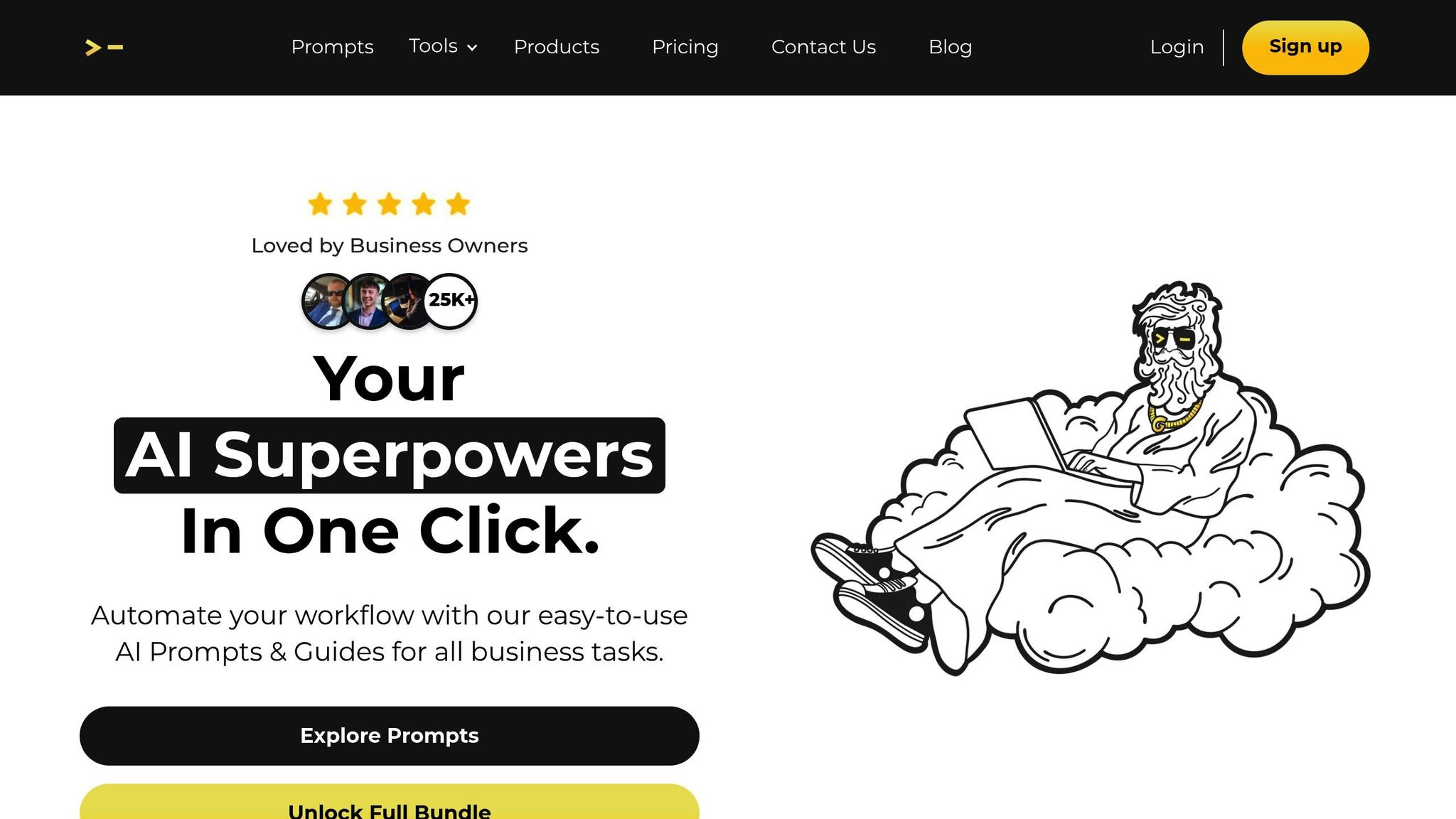
God of Prompt brings together over 30,000 AI prompts, guides, and toolkits for platforms like ChatGPT, Claude, Midjourney, and Gemini. It tackles a key challenge many organizations face: using AI effectively across various departments without needing deep technical knowledge.
The platform acts as a centralized hub where employees can find pre-built, tested solutions for common business needs. Instead of crafting prompts from scratch, teams can rely on templates refined by expert input and community feedback. This streamlined approach encourages collaboration and simplifies knowledge sharing across the board.
God of Prompt doesn't just store resources - it uses AI to make finding the right tools faster and easier, reducing search time by 30–50%. Resources are neatly categorized by business function, AI model, and complexity, making navigation intuitive.
For example, a U.S.-based marketing agency used God of Prompt to centralize its campaign brainstorming process. This cut ideation time by 40% and improved coordination between teams. Onboarding new employees also became quicker, thanks to curated guides and prompt collections that provided instant access to best practices and workflows.
The platform continuously learns from user activity, identifying outdated content and spotlighting high-performing prompts based on community ratings and usage trends. This ensures that companies always have access to the most effective and current resources.
God of Prompt encourages teamwork through features that let users contribute, rate, and update prompts. This fosters a culture of shared expertise and ongoing improvement. Organizations using the platform have seen a 25% boost in project completion speed across departments. This improvement stems from better knowledge accessibility and the standardization of AI-driven workflows.
The platform personalizes recommendations based on user roles, past activity, and departmental needs. For instance, a marketing manager might receive prompts for campaign automation, while someone in HR would see tools tailored to recruitment or employee engagement. God of Prompt’s AI tracks usage patterns to suggest the most relevant resources, helping users focus on applying knowledge rather than searching for it. This personalization extends to onboarding, offering role-specific tools and templates that help new hires hit the ground running. Companies report higher employee satisfaction, with users spending less time hunting for resources and more time being productive.
God of Prompt integrates effortlessly with popular workplace tools like Slack, Microsoft Teams, and various project management platforms. This allows users to access and share prompts directly within their daily workflows. For organizations needing custom solutions, the platform supports API access, enabling prompt resources to be embedded into internal systems like documentation platforms or wikis without disrupting established processes.
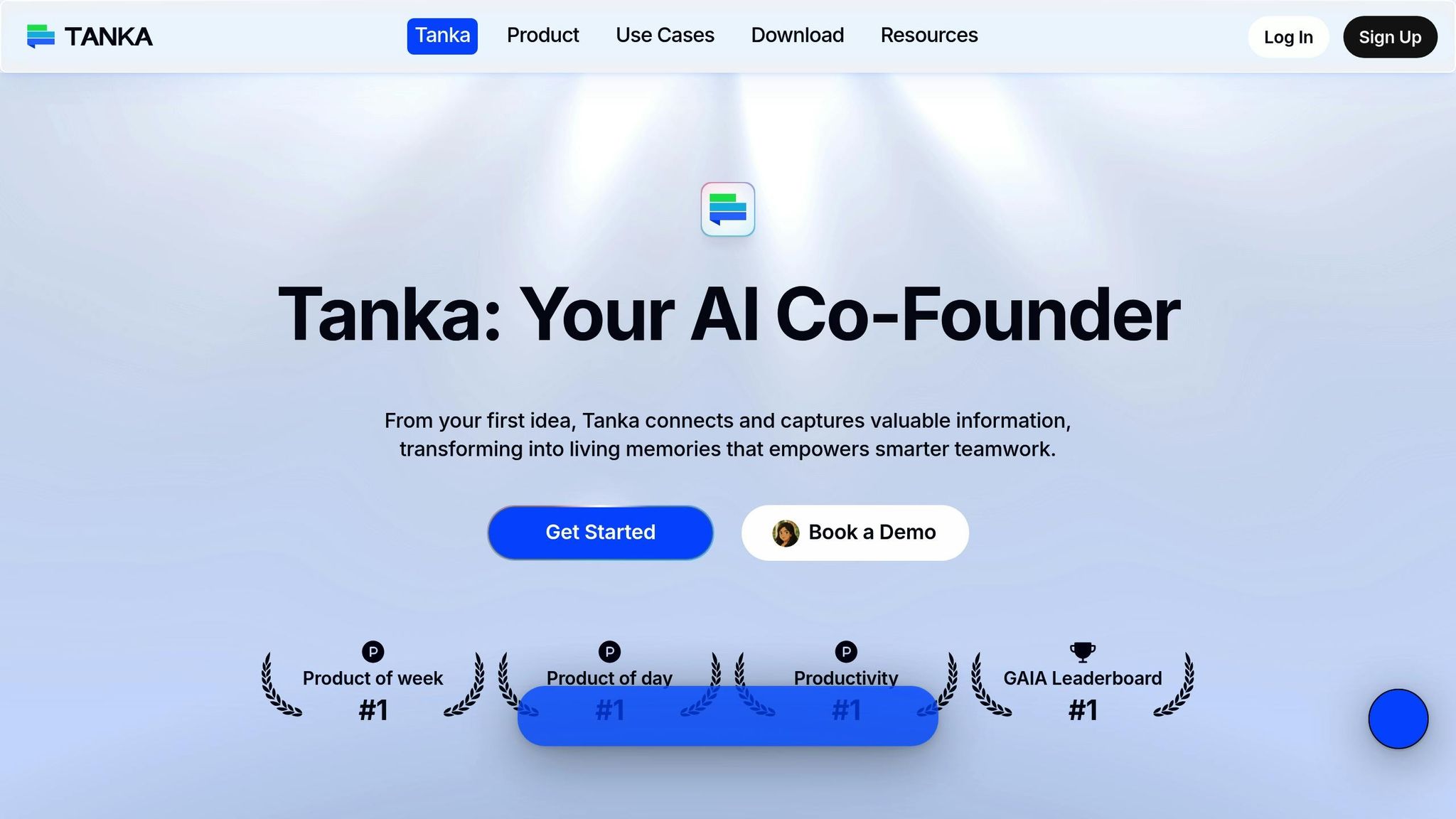
Building on the success of God of Prompt's central AI prompt repository, Tanka.ai takes a different approach by focusing on automating content organization and delivering dynamic insights to enhance knowledge sharing.
Tanka.ai serves as a powerful knowledge management platform, designed to capture, organize, and distribute information seamlessly across teams. By leveraging natural language processing (NLP), it scans through documents, emails, chats, and even meeting transcripts to create a dynamic knowledge graph. This graph automatically connects important assets and relationships, making expertise accessible across an entire organization.
At its core, Tanka.ai specializes in automated content intelligence. It processes a variety of inputs - documents, emails, chat logs, and meeting notes - to identify essential knowledge and map relationships between them. This results in a living knowledge graph that links related concepts, people, and projects without manual effort.
The platform’s semantic search feature goes beyond simple keyword matching. For example, if someone searches for "customer retention strategies", Tanka.ai doesn’t just pull up documents with those exact words. Instead, it intelligently finds related materials, such as content on customer success metrics, churn analysis, or case studies on retention, even if they use different terminology.
Additionally, its summarization tools distill lengthy documents or meeting notes into concise, actionable insights, saving time and improving understanding.
Tanka.ai shines in bridging gaps between departments through its collaborative tools. Teams can work together on shared repositories with version control, ensuring that marketing, sales, and customer success teams can update and maintain a unified playbook without creating silos.
The platform includes an expert identification system, which pinpoints subject matter experts based on their contributions and interactions. If someone encounters a challenge, Tanka.ai can suggest colleagues with relevant expertise, streamlining problem-solving and knowledge sharing.
Real-time collaboration tools allow team members to annotate, comment, and expand on existing knowledge assets together. This creates rich, multi-layered resources that incorporate diverse perspectives and ideas from across the organization.
Tanka.ai tailors its recommendations based on roles and context, ensuring that users receive information relevant to their needs. For instance, a product manager and a software engineer working on the same project will see different suggestions aligned with their specific responsibilities.
The platform also supports personalized learning paths, helping employees build expertise in new areas. As users engage with resources and demonstrate growing proficiency, Tanka.ai recommends progressively advanced materials to support their development.
Tanka.ai integrates effortlessly with enterprise productivity tools like Microsoft 365, Google Workspace, and Slack. This allows teams to capture and share knowledge within their existing workflows, reducing the need for additional platforms or processes.
Through its robust API connectivity, Tanka.ai can connect with specialized tools such as CRM systems, project management platforms, and industry-specific software, creating a unified knowledge ecosystem tailored to an organization’s needs.
With single sign-on (SSO) compatibility, the platform ensures secure and convenient access. It works with major identity providers and adheres to enterprise-grade security protocols, making it a reliable choice for organizations with strict compliance requirements.
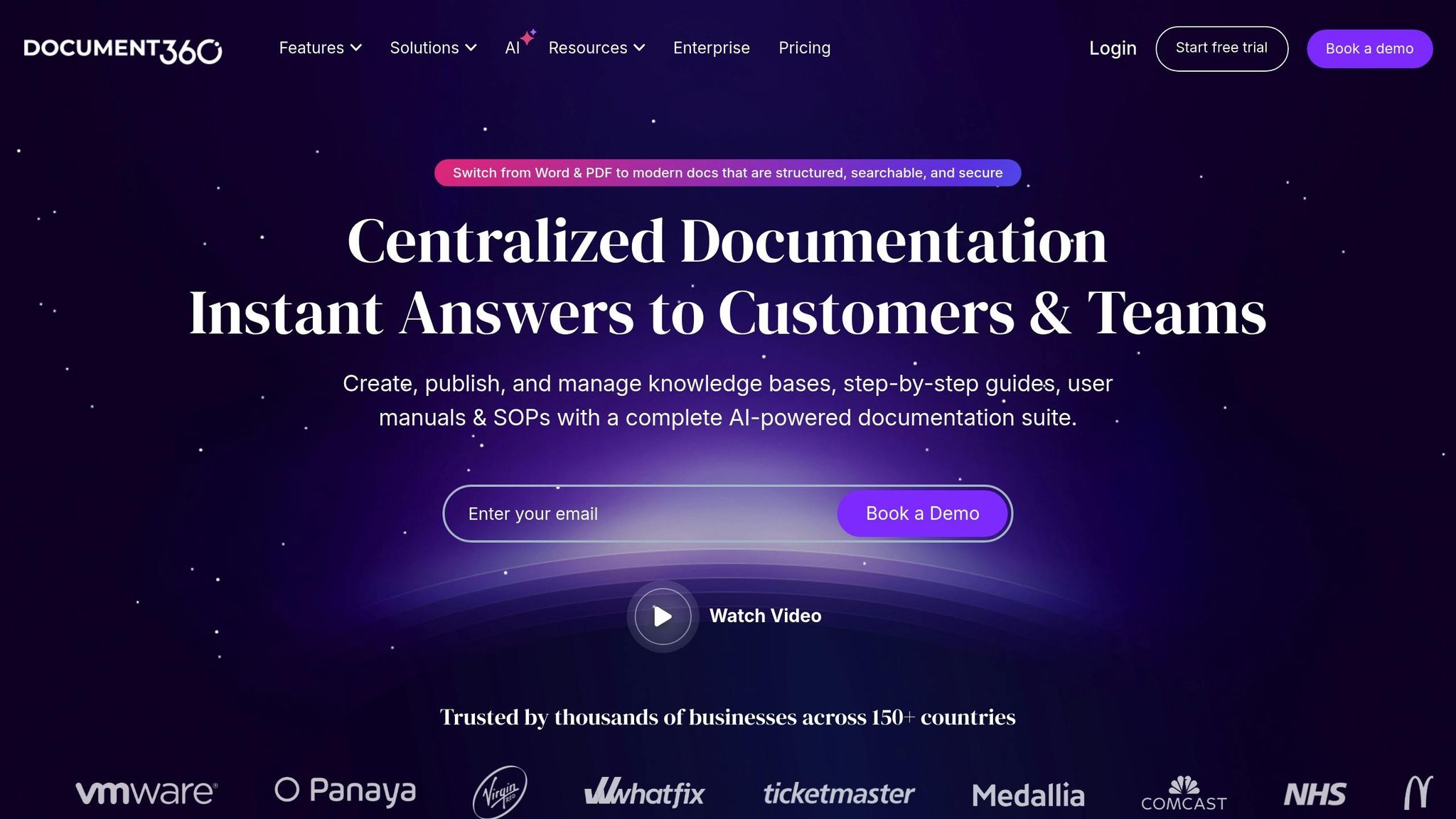
Document360 simplifies the way enterprises handle documentation by providing a platform to create searchable, self-service knowledge bases. These repositories can house everything from internal process guides and training materials to product manuals and customer support resources. It’s designed to streamline access to information while fostering smooth collaboration across teams.
With features like role-based permissions and version control, Document360 ensures that teams can securely update and maintain accurate documentation. Additionally, its ability to integrate with popular productivity tools helps unify workflows, making it easier for departments to stay aligned and efficient.
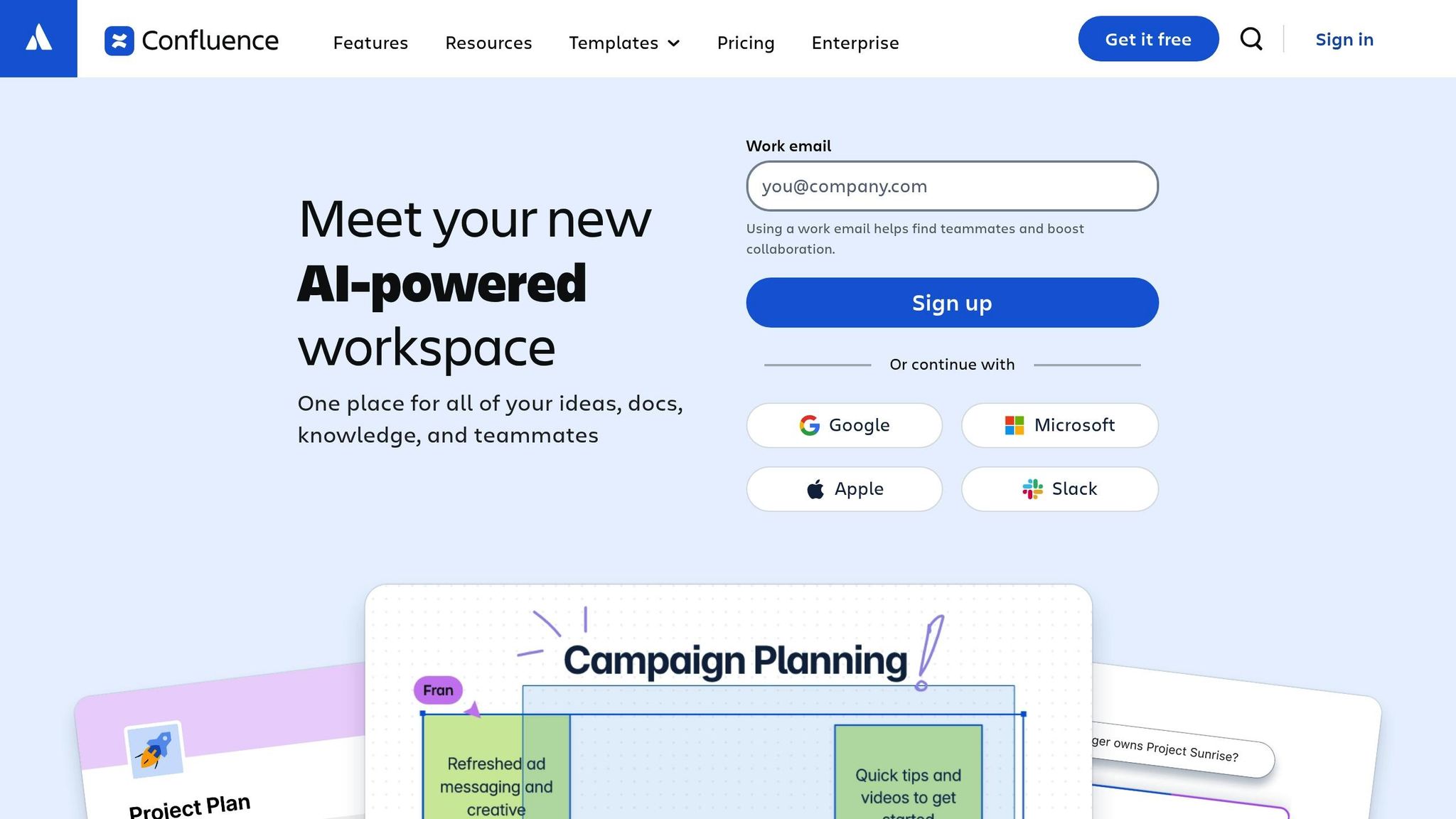
Confluence reshapes how teams handle knowledge by offering a collaborative workspace where they can create, organize, and share information. It’s especially effective at breaking down communication barriers in large organizations, making it easier for teams across departments to share and access critical information.
Confluence uses AI-driven search to make finding information intuitive and fast. By understanding context, it surfaces relevant content even when users don’t have the exact keywords. It also suggests related pages and content based on what team members are viewing, helping users uncover useful information they might not have thought to look for.
The platform’s automated content recommendations analyze user behavior to suggest the most relevant documentation for specific roles or projects. This feature saves employees time by reducing the effort spent searching for information and ensures they always access the most current and relevant resources. These recommendations naturally enhance collaboration by streamlining workflows.
Confluence’s real-time collaborative editing is a game-changer for teams working on cross-functional projects or company-wide policies. It allows multiple users to edit and contribute simultaneously, ensuring that everyone’s input is captured efficiently.
The comment and feedback system centralizes discussions directly on relevant content. Team members can leave comments, ask questions, or provide updates in context, keeping all communication organized and accessible for future reference.
With @mentions and notifications, stakeholders are instantly alerted when their input is needed or when updates are made to important content. This keeps projects moving forward and ensures no critical updates are missed.
Confluence seamlessly integrates with Atlassian’s suite of tools, like Jira, Trello, and Bitbucket. Teams can embed live Jira tickets into Confluence pages, ensuring project documentation stays aligned with the latest task updates.
It also connects with tools like Microsoft Office 365, Google Workspace, and Slack, allowing teams to import content and receive notifications without constantly switching between platforms. This streamlines workflows and keeps everyone on the same page.
Through third-party app integrations, Confluence expands its capabilities with tools for diagramming, project tracking, and analytics. These integrations help organizations build robust knowledge hubs that act as single sources of truth for all project-related information and documentation.
Guru simplifies knowledge sharing by delivering tailored AI-powered answers directly within your team's workflow. Instead of pulling employees away from their tasks to hunt for information, Guru ensures the right insights are delivered to the right person at the right time, with real-time permissions synced from your existing systems.
Guru's AI search does more than just match keywords - it factors in your role, team, and permissions to provide information that's relevant to your specific needs. This eliminates wasted time sifting through unrelated documents. Plus, its AI-driven suggestions offer timely, context-aware insights based on your current projects and activity, helping teams avoid potential roadblocks and stay on track.
Guru's configurable Knowledge Agents make information delivery role-specific, ensuring each department gets what they need without unnecessary clutter. Kenneth Pangan from eesel.ai highlights how these agents adapt to different teams' needs.
For instance:
With robust role-based access controls and custom permissions, Guru ensures that sensitive information stays secure while maintaining relevance.
Guru's Announcements feature allows you to send updates to specific teams, individuals, or the entire company, ensuring critical information reaches the right audience without overwhelming others. Additionally, the HRIS sync feature keeps employee data updated by importing it directly from your HR system, enabling precise role-based personalization.
Guru fits right into your existing digital ecosystem. It integrates with platforms like Slack, Microsoft Teams, and others, ensuring continuity and boosting team productivity without disrupting your workflow.

Bloomfire takes enterprise knowledge sharing to the next level by centralizing organizational information and breaking down silos with its knowledge management platform. By combining AI-driven search tools with strong collaboration features, it makes sharing and accessing critical information across departments much simpler. Its AI features are designed to enhance how teams discover and use knowledge.
Bloomfire’s AI engine goes beyond basic search by using deep indexing to analyze various content types, including multimedia and transcribed speech. This ensures users can find the information they need, no matter the format.
The platform also features an AI-powered content curation system that suggests relevant materials based on user activity and interests. This ensures employees receive the most useful information at the right time. The results? Companies using tools like Bloomfire report that new hires save 4.7 hours each week, boosting onboarding productivity by 11.7%.
Beyond onboarding, Bloomfire helps organizations make faster, smarter decisions. Businesses with strong knowledge management systems can make critical decisions 60.5% faster, translating to a 31% improvement in decision-making speed and a 36% increase in decision accuracy.
Bloomfire makes collaboration seamless with discussion boards, comments, and Q&A features that encourage knowledge sharing across departments. Teams can also create specialized groups tailored to specific projects, departments, or shared interests.
The impact is clear: companies using Bloomfire often see a 10% improvement in cross-functional collaboration and a 12% boost in team efficiency. Moreover, organizations with integrated knowledge systems managed through platforms like Bloomfire consistently outperform competitors by 15% in revenue growth. Nearly 80% of companies using market insights as part of their knowledge management strategies also report notable market share growth.
Bloomfire is designed to fit seamlessly into your existing workflow. It integrates with popular tools like Slack, Salesforce, and Microsoft Teams. Additionally, its open API allows for custom integrations, making it adaptable to specific organizational needs without disrupting established systems.
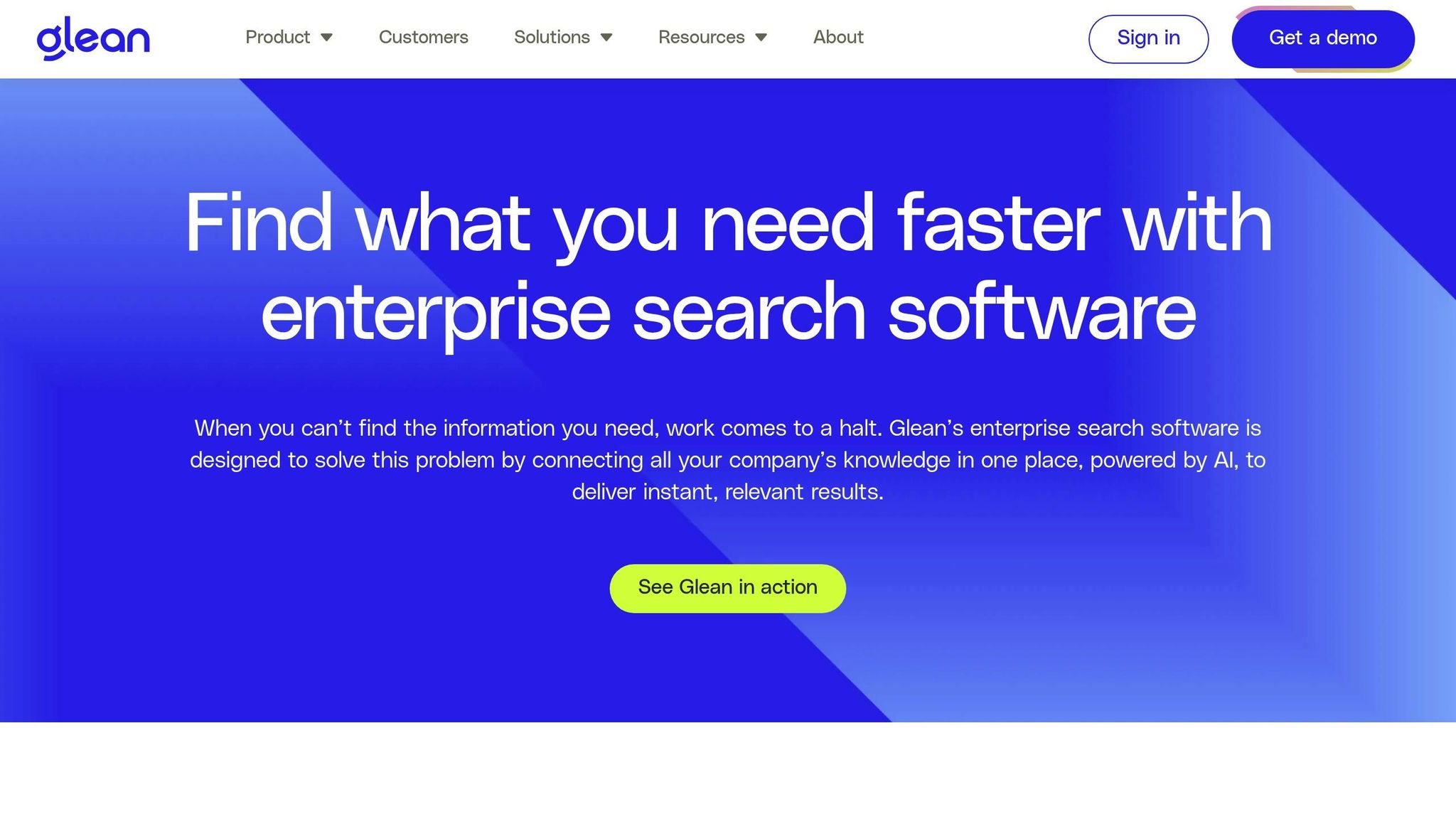
Glean is an enterprise search and knowledge discovery platform designed to help employees locate information across their organization's entire digital ecosystem. Unlike traditional tools that rely on basic keyword matching, Glean uses context to deliver smarter, more intuitive results tailored to how teams work and collaborate.
Glean's AI engine is built to understand natural language queries and connect content from various platforms. It learns from user behavior and organizational structures to uncover information employees might not even know exists.
The platform's semantic search technology takes things further by analyzing the meaning and context of queries. For instance, searching for "Q3 sales performance" might pull together related presentations, emails, Slack conversations, and dashboard data, offering a complete picture in one place.
What sets Glean apart is its ability to extract and organize knowledge from unstructured content. The AI identifies key concepts, relationships, and insights from sources like documents, meeting recordings, and conversations. It then organizes this information through intelligent tagging and categorization, making it easy for teams to find and use. This streamlined organization fosters better collaboration throughout the company.
Glean not only organizes data but also breaks down barriers between departments. Its dynamic knowledge graphs map out how information, people, and projects are connected, helping teams discover resources and expertise they might otherwise overlook.
One standout feature is people discovery, which identifies subject matter experts across teams when employees search for specific topics or skills. This includes context about the expert's contributions and interactions, making it easier to connect with the right person.
Additionally, Glean supports teamwork through its collaborative annotation feature, which lets employees add context, updates, or corrections to existing content. This creates a living, evolving knowledge base that grows as employees contribute, ensuring institutional knowledge stays current and accessible.
Glean’s AI adapts to individual work styles and preferences, refining its recommendations over time. It tracks what types of content users find most helpful, their collaboration habits, and their specific role's needs to deliver tailored search results and suggestions.
The platform also offers proactive knowledge delivery, such as personalized daily digests and notifications. These updates highlight relevant resources, discussions, and new developments tied to an employee’s projects or interests - saving them the hassle of searching for updates themselves.
For executives, Glean provides high-level strategic insights, while individual contributors receive more detailed, role-specific information. This tailored approach ensures everyone gets the knowledge they need in the format that suits them best.
Glean integrates with over 100 enterprise applications, including Google Workspace, Microsoft 365, Slack, Salesforce, Jira, and Confluence. This broad compatibility allows employees to search their entire digital workspace from a single interface, eliminating the need to switch between tools.
With real-time synchronization, Glean ensures that search results reflect the latest updates. Whether a document is edited, a new conversation takes place, or fresh content is added, the platform immediately incorporates these changes into its knowledge base.
For companies using custom applications or specialized tools, Glean offers flexible API integrations. This makes it possible to connect virtually any knowledge system, ensuring even niche or proprietary information sources are part of the unified search experience.
Choose an AI knowledge-sharing tool that aligns with your specific needs, budget, and tech stack.
| Tool | Main Use Cases | AI Features | Integration Options | Starting Price |
|---|---|---|---|---|
| God of Prompt | AI workflows across departments; prompt engineering; productivity in marketing, SEO, and automation | 30,000+ curated AI prompts for ChatGPT, Claude, Midjourney, and Gemini; prompt engineering guides; custom GPTs toolkit | Integrates with ChatGPT, Claude, Midjourney, Gemini, and Notion | Free plan; Bundle from $150 |
| Document360 | Self-service knowledge bases; technical documentation; support workload reduction; SOPs and user manuals | AI Writing Agent for content creation; semantic search; auto-tagging and SEO metadata generation | CX tools, CRM systems, and chat platforms | Pricing on request |
| Confluence | Collaborative workspaces; team documentation; project knowledge management | AI content generation and summarization; page catch-ups; intelligent search capabilities | Atlassian ecosystem; 100+ third-party apps | Free for up to 10 users; Standard at $6.05/user; Premium at $11.55/user |
| Guru | Real-time knowledge verification; sales enablement; customer support optimization | AI-powered content suggestions; verification workflows; contextual knowledge delivery | Salesforce, Slack, Chrome extension, and CRM integrations | Free trial for one month; All-in-One at $15/user monthly |
| Bloomfire | Social knowledge sharing; community-driven content; video-based learning | AI content tagging; intelligent search; automated content recommendations | Microsoft 365, Google Workspace, Salesforce, and learning management systems | Custom pricing based on team size |
| Glean | Enterprise-wide search; people discovery; unstructured content organization | Semantic search technology; dynamic knowledge graphs; proactive knowledge delivery | Over 100 enterprise applications including Google Workspace, Microsoft 365, Slack, and Salesforce | Custom pricing based on deployment scale |
Best Enterprise Fit by Company Size:
Based on Team Requirements:
When it comes to pricing, Confluence offers a clear tiered structure, while God of Prompt provides a valuable AI resource bundle. For tools like Glean, Document360, and Bloomfire, pricing is tailored to the scale of deployment.
Integration options play a key role in ensuring smooth adoption. Glean leads with over 100 enterprise integrations, God of Prompt connects seamlessly with popular AI platforms, Confluence excels within the Atlassian ecosystem, and Guru offers strong CRM integration for sales-driven teams.
When selecting an AI tool, focus on how well it aligns with your organization's structure, budget, and goals. Rushing the decision could lead to poor adoption rates and wasted resources.
Start by understanding your company's specific needs. For smaller businesses, simplicity and collaborative features may take priority. Larger organizations, on the other hand, often require solutions that can scale across multiple departments, offering enterprise-wide search capabilities and detailed documentation.
Take the time to match tools to the unique demands of each team. For instance, some may need support for creative workflows, others might prioritize real-time insights, while another group could rely heavily on robust documentation.
Before committing, consider running a pilot program with your top choices. This helps evaluate factors like user satisfaction, ease of integration, and overall performance.
Don’t forget to factor in the total cost of ownership - this includes not just the initial investment but also costs for implementation, training, and ongoing maintenance. Ultimately, prioritize tools that are intuitive and fit seamlessly into your team's daily workflows. A solution that balances ease of use with AI-driven efficiency will encourage adoption and foster better knowledge sharing across the organization.
To select the best AI tool for knowledge sharing, start by evaluating your company's unique requirements. Consider factors like the complexity of your knowledge base, how much collaboration is needed, and the type of user experience you want to deliver. For larger organizations, tools that can grow with your needs and integrate smoothly with existing systems are often a smart choice. Smaller teams, on the other hand, might lean toward budget-friendly options with straightforward functionality.
Look for tools that align with your objectives, allow for customization, and are user-friendly. Features like scalability, strong collaboration capabilities, and seamless integration into your team's workflow should be top priorities. Focusing on these aspects can boost productivity and help your organization retain knowledge effectively.
When bringing AI tools into your knowledge-sharing processes, it's important to make sure they work well with the systems you already use - like intranets, collaboration tools, and databases. This ensures everything runs smoothly without disrupting workflows. Equally important is protecting data security and privacy. Implement robust safeguards and keep human oversight in place to tackle any ethical challenges that might arise.
Also, evaluate whether the tool can grow alongside your organization and how well it fits into your team's current processes. A careful approach that considers these aspects can make the integration process much more effective and hassle-free.
Testing an AI knowledge-sharing tool through a pilot program gives organizations a chance to see how it performs under real-world conditions. This approach helps assess the tool's accuracy, relevance, and ease of use while also identifying any challenges that might arise. It’s a practical way to measure how the tool impacts collaboration and ensures it aligns with the organization's goals.
Beyond just testing, pilot programs are a great opportunity to gather user feedback. This input can be used to fine-tune the tool, making it more effective before launching it on a larger scale. By addressing potential issues early, organizations can reduce risks, encourage smoother adoption, and ensure the tool genuinely enhances knowledge-sharing efforts across teams.
